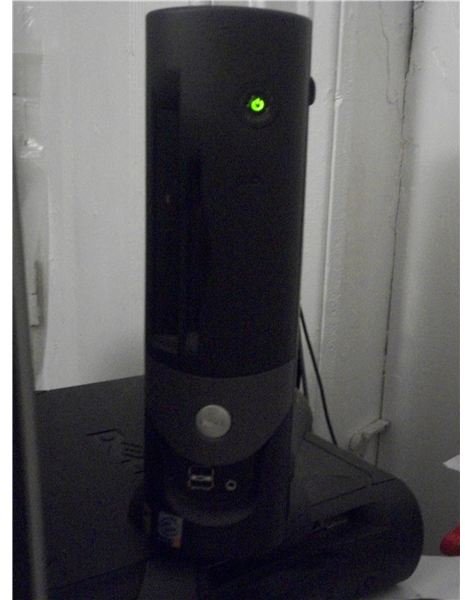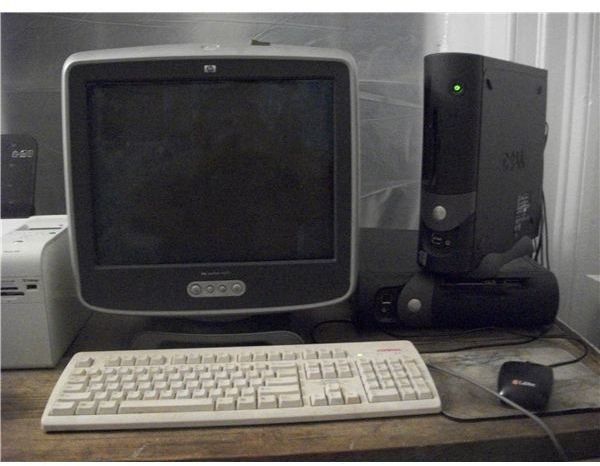Five Ways to Make Your Computer Faster
Speeding Up Slow Computers
There are five methods you can use to make your computer faster than it is. The best thing to do if you want to optimize the speed of your computer is to use all five. If you go down the list in order you will optimize the cleanup effort and maximize the speed.
Run a Disk Cleanup
This is one of the easiest methods to get your computer running faster. It is also one of the most overlooked tricks to speed up a computer. Disk cleanup is a program that cleans out all temporary files (files loaded with web pages when you opened them), use cache (history, Internet logs, information used to auto-fill pages), any pages saved from the Internet onto your computer and empties the recycle bin.
Open the Start menu down at the bottom left of the window. Scroll over to “All Programs” and open that. Scroll over to “Accessories”; scroll over to “System Tools”. Choose “Disk Cleanup” from that menu. A box will appear. Choose the main drive of your computer (most often “C”). Click OK. Click on every option in the box that shows up. Click OK. This may take a few minutes or an hour depending on the size of your computer and the last time you ran this function.
Run the Program Removal Tool
The next phase of getting the computer running faster is to get rid of all those programs you either don’t use, or use maybe once a month or less. Many programs you may not even know you had.
Go back to the Start menu, get yourself back to the Disk Cleanup option discussed above. This also has a way to get to the Add/Remove Programs option. Once you get to the Disk Cleanup box, look for the “More Options” tab – highlight that with the mouse. This brings up three choices; you want the one in the middle that allows you to dispose of unwanted programs and software. Click OK to use the tool. A large window should open up displaying all of the programs you have installed on the computer. Look over the entire list. Take note of the last used date, to the right. If you don’t recognize the program you may not know you had it. There may also be a few installation programs that you used to put other software on the computer. Either download these programs onto a flash drive to keep them, or delete them. Usually you don’t need these as they are free on the net. Toolbars and games often bring software that piggybacked with the installation. Get rid of all that too. Highlight the program you want deleted. A box with the word “Remove” will appear on the lower right side of the highlighted section. Click that button to remove the program. You may need to click OK somewhere during the removal. You also may need to restart your computer for some software to completely remove itself. Repeat the process until you have removed all unnecessary or unwanted programs.
WARNING: Do not attempt to remove or uninstall programs by simply deleting the file folders. This does not delete the program completely. This also can cause damage to the operating system as many programs share files and folders with the operating system.
Defragment the Computer

The next trick to speed up your computer is to run defragmentation software. Operating systems pick up pieces of software as they use them; but they don’t put them back where they found them. When you go to use the software again, the operating system must go looking for the pieces it needs; these are often in much different locations than they were before. This is what slows down the operating software, and can sometimes cause a program to respond slowly or take awhile to get started. Defragging the computer puts all the pieces back into the correct position for optimum efficiency.
Go to the Start menu again. Go back to System Tools the same way you did before. Disk Defragment is usually just below Disk Cleanup on the menu. Highlight and click on the defragment option. A box pops up giving you a choice of which drive to defragment. Usually “C” or whatever drive your operating system is on. Click OK. Again, depending on the amount of software on your computer and the time since your last defragment, this can take an hour or more; especially if you have lots of media files or documents. Run the program until it ends. It will give you the option to close or print a report when finished.
Clean Up the Start up Files
Here is another way to get your computer running faster that is overlooked. Most people, myself included sometimes, tend to click away at the pop-up screens when installing software. One of these screens allows adding the program to the start up folder and Start menu; this means the software will start up when the computer is powered up. The more items in this list, the longer it takes for the computer to completely start up and the slower it gets.
Go to the Start menu again. Look for the “Run” option on the Start menu; it’s on the bottom right above the button that shuts off the computer. Highlight “Run” and click on it. A pop-up box appears with a section to type something in. Type “msconfig” (without quotes) into the box. This brings up the System Configuration Utility. You will find a row of tabs up top. On the right of the tabs you will find “Startup”. Click on that tab to open that box. There will be a list of programs currently running with green checkmarks to the left of each one. To stop a program from running when the computer starts up, uncheck the box next to it. Programs to halt on startup include Google Update, instant messenger, mail, games, browsers and any other program you can just as easily click on once to start. Click on “Apply” and restart your computer.
WARNING: If you don’t recognize a program, DO NOT uncheck it. This list also includes programs which MUST start up with the computer. Only uncheck programs you recognize and do not need to have on startup.
Clean the Registry
The registry by this time will contain fragments and leftover files that used to belong to programs. It will contain orphaned items no longer needed. Find yourself a good registry cleaner for this operation. There are free cleaners out there but not all of them are worth the hassle after downloading. One I did find useful is Free Windows Registry Repair. Once you download the software, run the full scan. Use the registry cleaner to remove these files. Run the cleaner again to make sure you got everyone (especially if using it for the first time). Don’t worry about the Empty Registry Keys. Those belong there, as they are reserved space not taken up by any files yet.
WARNING: Do not attempt to rewrite the registry keys unless you are certified or thoroughly understand the consequences. Incorrectly altering the registry keys WILL disrupt parts of the computer and can cause the operating system to fail. Use a registry cleaner before attempting to alter the system yourself.
To keep your computer running at a good rate you must schedule regular maintenance using these five methods. Keeping your computer free of junk or unnecessary files keeps your computer running faster.
Image Source: W.A. Swan
